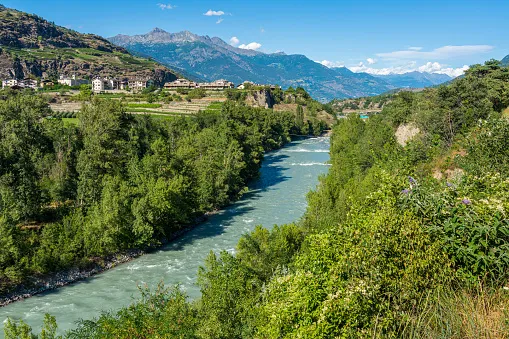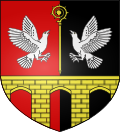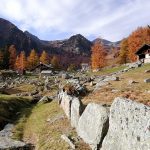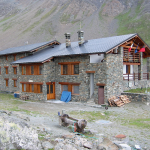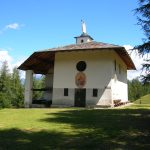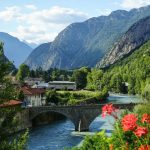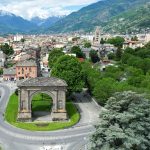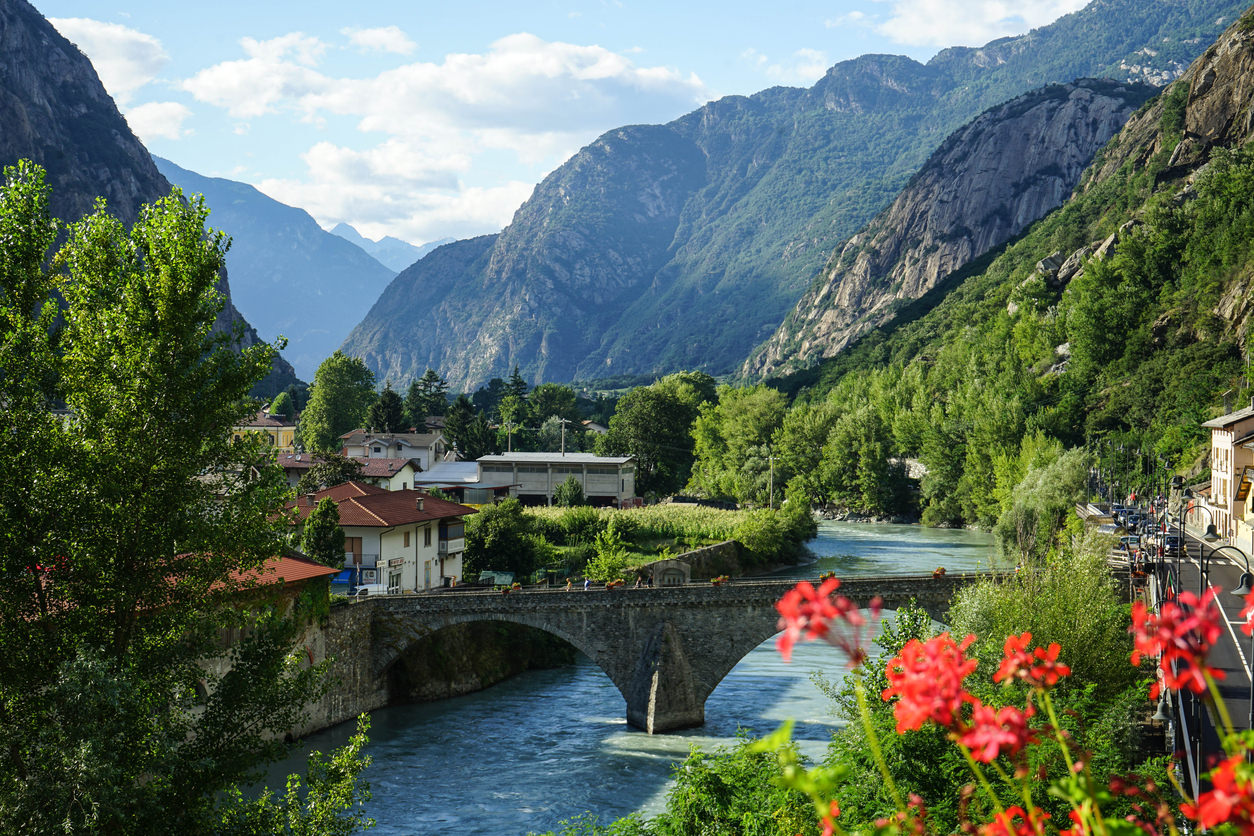
A panoramic view of an old bridge on the Dora Baltea. Hone, Aosta Valley - Italy
Charvensod Dora Baltea
The Dora Baltea
The Dora Baltea is a river in northern Italy that originates in the Aosta Valley from the confluence of the Dora de Ferret, which comes from the Pré de Bar glacier, and the Dora de Vény, which comes from the Miage glacier, both located in the Mont Blanc massif. 170 kilometers long, it crosses the entire Aosta Valley from west to east and part of Piedmont, until it flows from the left into the Po River in the Crescentino area. The route of the Dora Baltea
The Dora Baltea originates in the Aosta Valley, specifically at the foot of the Mont Blanc massif. From here, it begins its journey through the valley, fed initially by the Dora di Verney at Pré-Saint-Didier and, on the orographic right, by the Dora di Valgrisenche, the Dora di Rhêmes, the Savara stream and the Grand Eyvia. It then continues its course skirting the southern part of Aosta, Saint-Christophe, Nus, Fénis, and Châtillon, where it receives from the left the Marmore stream, and Saint-Vincent. At this point, the Dora abruptly changes direction and begins to head south.
At Verrès, the Evançon stream flows into the Dora, which continues wetting the banks of Arnad, Bard, Hône (where it receives the waters of the Ayasse stream) and the last municipality in the Aosta Valley, Pont-Saint-Martin. Before crossing the regional border, the Dora Baltea receives the Lys stream, then proceeds into Piedmont. It crosses part of Canavese and reaches Ivrea, where it encounters a dam that bars its path. From here, the Dora, much less filled with water than at the beginning, proceeds slowly toward the plain, until it reaches its destination, flowing into the Po.
Its waters, fed by glaciers, are used for irrigation and power generation.
Its course offers varied and picturesque landscapes, including mountains, hills and plains.
Finally, the Dora Baltea is a river that lends itself to various sports and recreational activities, such as rafting, canoeing, fishing and hiking.
Sculpture of the Dora Baltea in Chanoux Square
In the center of Aosta, in the city’s main square, Piazza Émile Chanoux, right in front of the porticoes of the Town Hall, are two beautiful sculptures representing the two main waterways of the capital city. The first is a fountain depicting the Buthier; the second is also a fountain, evoking the Dora Baltea. This statue takes the form of a woman, who looks like a deity, holding a trident and looking eastward toward the course of the Dora.



Dora Baltea The History
The name comes from the Latin Duria Maior or Duria Bautica, referring to the Buthier stream, its tributary. In the Middle Ages it was a communication and trade route between the Alps and the plains, and saw the passage of armies, pilgrims and merchants. Along its banks are castles, fortresses, abbeys, and historic villages that tell its story.

